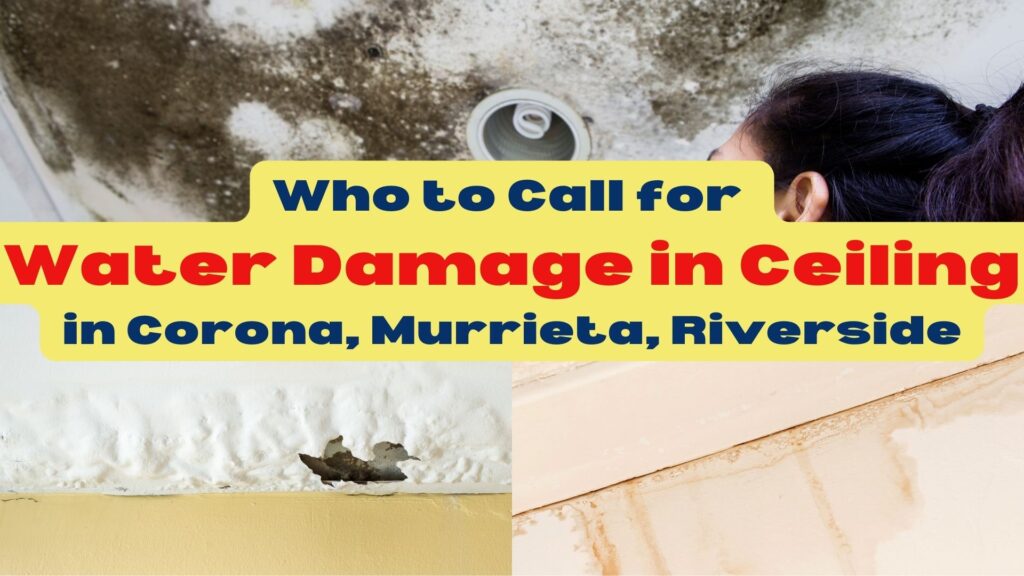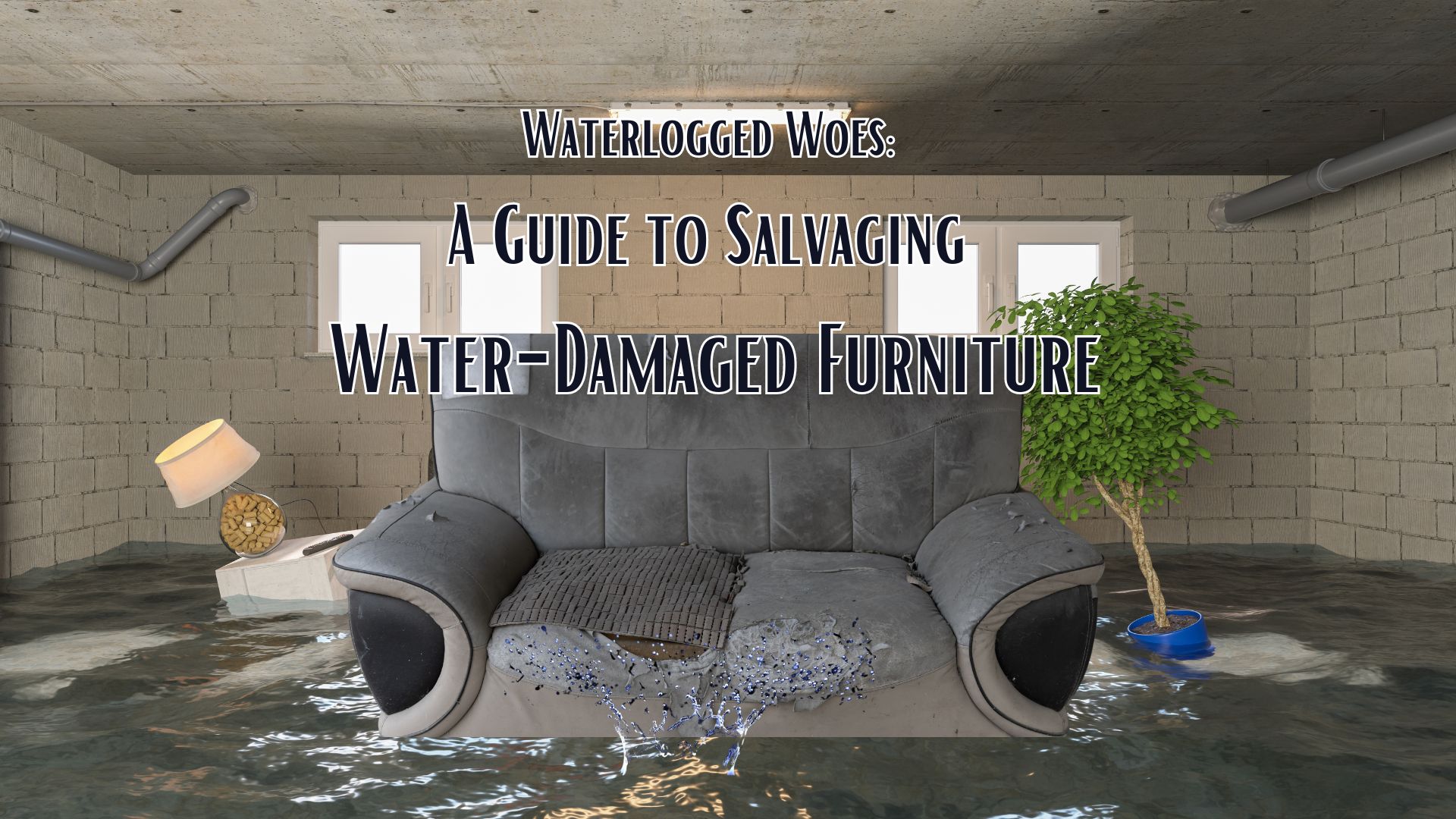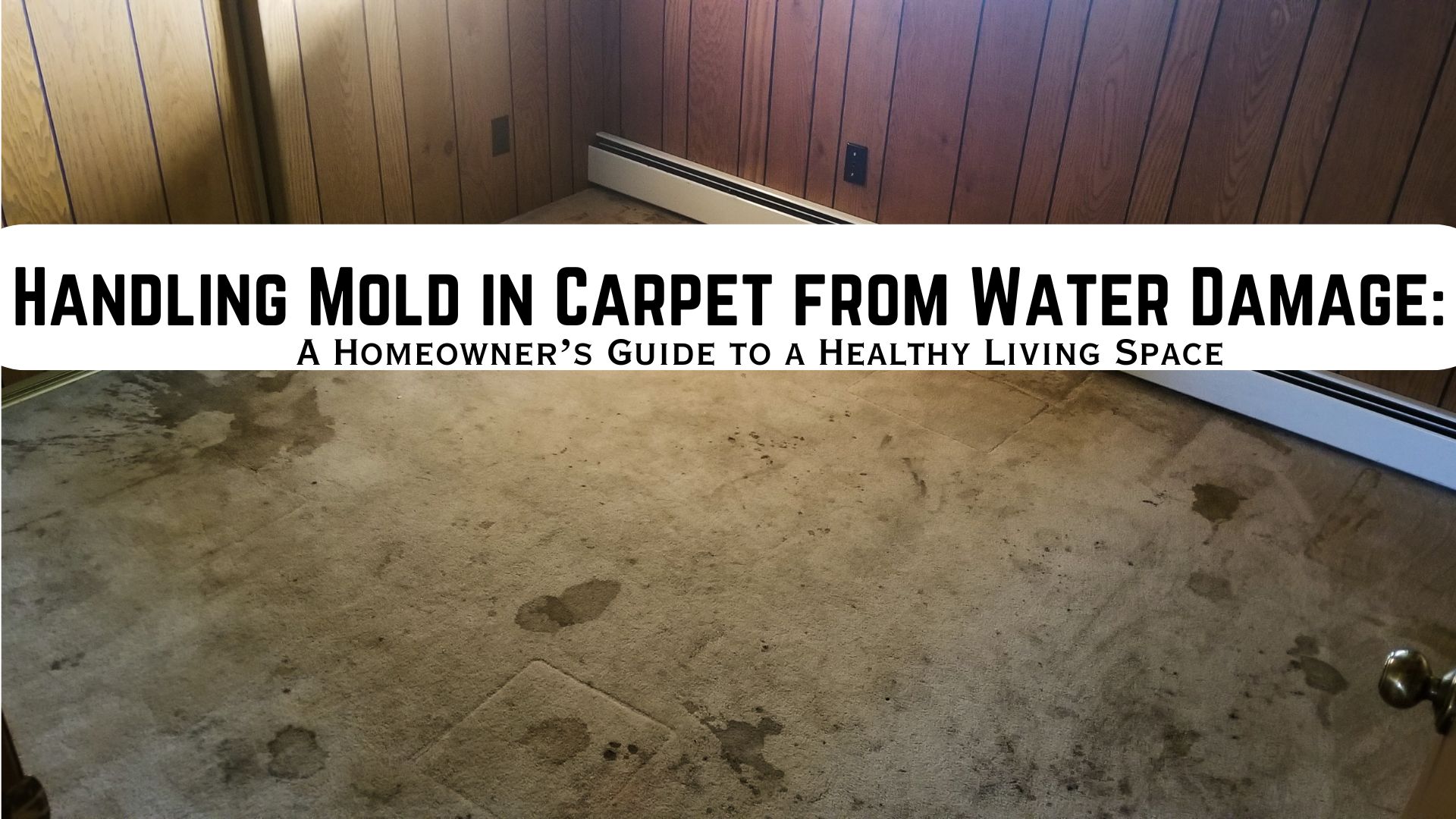
Water damage in ceiling can be a homeowner’s nightmare, and addressing it promptly is essential to prevent further complications. Furthermore, if you’re in the Corona, Murrieta, or Riverside area and facing issues such as water leaks, roof leaks, ceiling leaks, mold and mildew growth, damaged drywall, or any other signs of water damage, it’s crucial to know who to call for help.
This article will guide you through the steps you need to take and the professionals you should contact to address ceiling water damage effectively.
Water Damage in Ceiling: Identifying the Signs
Before we delve into who to call for help, it’s important to recognize the signs of water damage in ceiling. Being vigilant about these indicators can help you catch the issue early:
- Visible Water Stains and Peeling Paint
Water stains on your ceiling are an obvious sign of water damage. These stains often appear as discolored patches or rings, and if left untreated, they can lead to peeling paint and further deterioration of your ceiling.
- Ceiling Leaks and Dripping Water
If you notice water dripping from your ceiling or small holes forming, it’s a clear indication that water damage has occurred. Moreover, these leaks can worsen rapidly, causing structural damage and potential health hazards due to mold and mildew growth.
- Mold and Mildew Growth
The presence of mold or mildew on your ceiling or nearby walls is a sure sign of excess moisture, often resulting from water damage. Mold can cause health issues and must be addressed promptly.
- Damaged Drywall and Structural Issues
Water damage can weaken the structural integrity of your ceiling and walls. If you notice sagging or damaged drywall, it’s a sign that you may have a more serious problem on your hands.
Finding the Source of the Water Damage
Once you’ve identified the signs of ceiling water damage, your next step is to locate the source of the water. This could be due to a plumbing issue, a leaky roof, a clogged gutter, or other factors:
- Plumbing Issues
Check your home’s plumbing system for leaks or faulty pipes. Sometimes, water damage in your ceiling is caused by plumbing problems that require immediate attention.
- Leaky Roof and Roofing Contractor
A leaky roof is a common cause of ceiling water damage. If you suspect your roof is the source, it’s advisable to contact a reputable roofing contractor to assess and repair the issue.
- Clogged Gutters
Clogged gutters can lead to water overflowing and seeping into your home’s structure. Regular gutter maintenance can help prevent such problems.
10 Steps in Dealing with Water Damage in Ceiling
Dealing with water damage in ceiling can be a challenging situation for homeowners. Taking immediate action is so essential to minimize the damage and prevent further complications. Here are the steps to follow when you encounter water damage in your ceiling:
- Assess the Damage: Start by assessing the extent of the water damage in the ceiling. Look for visible signs such as water stains, peeling paint, or dripping water. Identifying the source of the water damage in the ceiling is crucial in this step.
- Safety First: Ensure safety with the whole family. If there is a risk of structural instability due to the water damage in ceiling, evacuate the area and avoid standing water.
- Locate the Source: As mentioned earlier, finding the source of the water damage in the ceiling is paramount. It could be a roof leak, a plumbing issue, or even a clogged gutter. Addressing the source will prevent future ceiling leaks.
- Turn Off Electricity: If the water damage in your ceiling has affected electrical fixtures or wiring, turn off the electricity supply to the affected area to avoid electrical hazards.
- Contact Professionals: Once you’ve assessed the damage and determined the source, it’s time to call in professionals who specialize in water damage repair. These experts have the tools and knowledge to tackle water damage in ceilings effectively.
- Document the Damage: Before any repair work begins, document water damage in the ceiling with photographs and detailed notes. This documentation will be valuable when dealing with your insurance company.
- Address Mold and Mildew: If you see signs of mold and mildew due to water damage in ceiling, it’s essential to address this issue promptly. Mold can pose health risks, so consider enlisting mold remediation specialists.
- Contact Your Insurance: If you have homeowner’s insurance, contact your insurance company to report the water damage issues in your ceiling. Gather and provide them with the documentation and follow their instructions for filing a claim.
- Begin the Repair Process: After the water damage in ceiling assessment and insurance claim, the repair and restoration process can begin. This may involve removing damaged materials like damaged drywall, ensuring proper drying of affected areas, and structural repairs if necessary.
- Prevent Future Damage: Once the repairs are complete, take steps to prevent future water damage to the ceiling. Regular maintenance of your roof, gutters, and plumbing can go a long way in avoiding similar issues in the future.
Dealing with water damage in ceiling can be a stressful experience, but following these steps and seeking professional help can help you restore your home to its pre-damaged condition and safeguard it against future water-related issues.
Preventing Future Water Damage in Ceiling
To prevent future ceiling water damage, consider the following preventive measures:
Regular Home Inspections
Schedule regular home inspections to identify and address potential issues before they become major problems.
Maintenance of Roof and Gutters
Keep your roof and gutters well-maintained, ensuring they’re free from debris and in good condition.
Prompt Repairs
Address any plumbing issues or leaks promptly to prevent water damage from worsening.
In conclusion, knowing who to call for water damage in ceiling in Corona, Murrieta, and Riverside is crucial to protecting your home. By recognizing the signs of water damage, identifying the source of the issue, and contacting the right professionals, you can minimize the damage and ensure a safe and comfortable living environment.
Who to Call for Water Damage in Ceiling?
Now that you’ve identified the source of the water damage, it’s time to call in the professionals for water damage repair:
Water Damage Repair Specialists
Contact a water damage repair specialist who can assess the extent of the damage and take appropriate measures to mitigate it. They have the expertise and equipment to extract water, dry affected areas, and restore your home to its pre-damaged condition.
Mold Remediation Specialists
If mold and mildew have developed as a result of the water damage, mold remediation specialists can safely remove the contaminants and implement measures to prevent their return. Mold can be hazardous to your health, so it’s crucial to handle it professionally.
Insurance Company
Don’t forget to contact your insurance company to report the water damage. They can guide you through the claims process and help cover the cost of repairs, depending on your policy.
Dealing with Insurance Companies
In many cases, your homeowner’s insurance policy may cover the costs of repairing water damage. Here’s how to navigate the process:
a. Document the Damage
Before initiating any repairs, document the extent of the damage with photographs and detailed descriptions. This is important as this will help support your insurance claim.
b. Contact Your Insurance Company
Reach out to your insurance company promptly to report the water damage. Provide them with all the necessary documentation and follow their instructions for filing a claim.
c.Work with Approved Contractors
Insurance companies often have a list of approved contractors or restoration companies. It’s a good idea to work with these professionals as they are familiar with the insurance claim process and can ensure that repairs are done according to the insurer’s requirements.
Final Thoughts on Water Damage in Corona, Murrieta, and Riverside

Dealing with water damage in ceiling can be a stressful experience, but knowing who to call like Superior Restoration, will help you take the right steps that can make the process smoother. Remember to be proactive in identifying and addressing water damage signs, promptly contact the appropriate professionals, and work closely with your insurance company when necessary. With the right approach, you can ensure that your home is restored to its original condition, free from the effects of water damage, mold, and structural issues.
Call our 24/7 office today, Water Damage Temecula.



